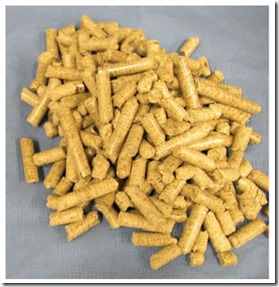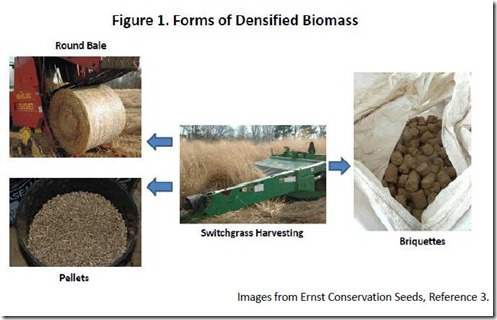Guest Post by Dr. Robert Humphreys
 Petroleum is a liquid, albeit a flammable, smelly, toxic, viscous one. It can be pumped into huge oil tankers and floated across oceans or pumped through pipelines across hundreds or thousands of miles of inhospitable terrain. It can be stored indefinitely in salt domes or huge tanks with little loss or deterioration. It can be available any season in any part of the world. Although petroleum composition varies with source, similar equipment and technology can be used to process most types of petroleum; such fungibility means that petroleum can be processed anywhere it is needed.
Petroleum is a liquid, albeit a flammable, smelly, toxic, viscous one. It can be pumped into huge oil tankers and floated across oceans or pumped through pipelines across hundreds or thousands of miles of inhospitable terrain. It can be stored indefinitely in salt domes or huge tanks with little loss or deterioration. It can be available any season in any part of the world. Although petroleum composition varies with source, similar equipment and technology can be used to process most types of petroleum; such fungibility means that petroleum can be processed anywhere it is needed.
Biomass logistics are very different. Biomass type and supply depend on local climate. Biomass directly from the field typically contains significant moisture and packs inefficiently, giving it a low packing density. Biomass has a limited “shelf life” and biomass dust is a potential explosion hazard. All of these issues complicate biomass production, transport, conveying, and storage. Biomass logistics have been discussed in detail elsewhere (biomass logistics study), so only some critical issues will be considered here.
Density
In a recent post, we explained that biomass energy density is low compared to petroleum (see September 10, 2013 post, “Second generation Biomass Feedstock 2: the Oxygen Problem”). The packing density (mass per unit volume) of raw biomass from the field also is much lower than that of crude oil or coal. Representative density data for some biomass forms, petroleum and coal are shown in Table 1.
Table 1. Comparison of Bulk Densities of Raw Biomass Sources with Petroleum and Coal
|
Feedstock |
Density (kg/m3) |
Data Source |
|
Petroleum |
800-1000 |
|
|
Coal |
700 |
|
|
Loose wheat straw |
18 |
|
|
Debaled switchgrass |
54-87 |
|
|
Chopped wheat straw (3.35 mm) (12.27 mm) |
50.46 25.06 |
|
|
Chopped switchgrass (3.30 mm) (12.32 mm) |
105.18 45.26 |
|
|
Chopped corn stover (3.26 mm) (12.79 mm) |
66.56 34.44 |
The low bulk density of “from the field” biomass makes transport to a processing facility an inefficient process, prompting extensive research in processes for biomass densification.
Water is a significant component of biomass directly “from the field.” From a logistics perspective, high moisture content can impact transportation cost and storage stability. Farmers often leave cut hay on the field for a period of time to allow some drying to occur, but this may not be an option for biomass that will be used for biofuels or renewable chemicals because of contamination by abrasive materials such as soil and rocks1.
Biomass Densification
Biomass can be densified in different ways2. Baling is the most common form of densification and is commonly employed for storage of both hay and straw. Baling increases biomass density substantially compared to “loose” biomass. Chopping to a fine particle size greatly increases the packing density. Biomass density can be increased further by compacting fine particles into either pellets or briquettes. The compacting process usually involves some form of moisture or steam treatment and drying to encourage effective bonding between particles and formation of a robust densified product form.
Densification can increase packing density by an order of magnitude or more, as demonstrated by data in Table 2. Typical densified product forms (bales, pellets, briquettes) for switchgrass are shown in Figure 1. Biomass densification has been studied in great detail; information on processes, economics, and equipment is readily available in the open literature3. Densification processing requires a substantial capital investment. Coupled with energy to run the equipment, densification will add significantly to biomass logistical costs which, hopefully, will be offset by savings in transportation.
Table 2. Biomass Densifaction Data
|
Type of Densification |
Density (kg/m3) |
Data Source |
|
Round bale |
160-190 |
|
|
Square bale |
210-255 |
|
|
Briquettes (32mmx25mm) |
350 |
|
|
Pellets (6.24mm diameter) |
550-700 |
Renewable Fuels and Chemicals
Pelletizing and briquetting may prove to be effective solutions to address biomass logistics for energy generation by direct burning in boiler furnaces and for bio-fuel and renewable chemical production. Nevertheless, biomass pellets and briquettes are not suitable for production of biofuels and renewable chemicals without further processing. Fermentation technology to produce biofuels such as ethanol and butanol requires conversion of biomass to sugars, a transformation which involves enzymatic, chemical, or physical treatment of fine particulate biomass. Similarly, pyrolysis/reforming technology for production of biofuels or renewable chemicals employs biomass size reduction to very small particles or prior transformation into sugars. Consequently, further processing will be required to convert biomass pellets/briquettes into the fine, consistent particulate size required for processing into biofuels and renewable chemicals.
Whatever the form physically densified biomass will take, it is probable that renewable fuel and chemical manufacturing facilities will be located centrally to where the biomass is produced or collected to minimize the cost of logistics. While it is far too early to predict the form a huge biomass logistical system will take, there are some developments that are exemplary:
– Bio-polyethylene is produced by Braskem in Brazil, where the key raw material, ethanol, can be produced cost effectively from locally grown sugar cane (Braskem bio-PE ).
– KiOR, a producer of cellulosic biofuels, has a production facility in Columbus, Mississippi (KiOR biofuels ). Mississippi is a major producer of southern yellow pine (loblolly pine) , the feedstock for KiOR’s biofuels production process.
– Renmatix is a leading developer of lignocellulosic sugar technology that will be a feedstock for production of biofuels and renewable chemicals. Renmax has announced collaborations with UPM (Renmatix and UPM ) and Waste Management (Renmatix and Waste Management ). UPM is a major European forest products and paper producer. Waste Management is a leading municipal waste collector and recycler and a leading renewable energy producer. UPM and Waste Management give Renmatix access to major producers of biomass feedstock (lignocellulosic biomass and municipal waste biomass, respectively) with deep expertise in their respective biomass supply chains.
Where to next?
In this post, we have tried to give the reader some idea of the issues related to getting biomass from the field to a plant where it can be turned into renewable fuels and chemicals. In the opinion of the author, it is probable that biomass logistics will develop through collaborations of biofuels and renewable chemicals producers with companies that already have deep expertise in managing the biomass supply chain (eg. logistics, separation, characterization, quality, and specification setting). Such companies could include those with major businesses in forest products, pulp and paper, commodity agricultural products, waste collection/recycle, and natural fiber cloth producers. Based on some of the examples cited above, this process is already underway.
In the next post in this series, we will focus on the next step in the biomass-to-fuels and chemicals chain, which is biomass pretreatment.
References
1. “Biomass Gasification: A Comprehensive Demonstration of a Community-Scale Biomass Energy System”, Joel Tallaksen, see Chapter 8, page 10, Biomass contamination ; See page 15-19, “Corn Stover as a Bioenergy Feedstock: Identifying and Overcoming Barriers for Corn Stover Harvest, Storage, and Transport”, Daniel Klingenfeld, Biomass contamination 2
2. We have focused on physical densification of biomass here. Thermal “densification” processes, which involve thermal treatment of biomass and, therefore, significant chemical reaction beyond simple drying, will be dealt with in the next post under “Biomass Pre-treatment”.
3. Some of the many references available on-line: “Biomass Densification – Cubing Operations and Costs for Corn Stover”, S. Sokhansanj and A.F.Turhollow, “Biomass Densification Document of Evaluation”, Zachry Engineering Corporation, Biomass densification 2 ; “Biomass fuel procurement guide”, Carbon Trust, “Biomass Storage and Handling: Status and Industry Needs”, Gregory D. Williams, Jan C. Jofriet, and Kurt A. Rosentrater, Biomass densification 4 ; “Economics of producing fuel pellets from biomass”, S. Mani, S. Sokhamsanj, and A. Turhollow, Biomass densification 5 .
4. Images in Figure 1 from https://www.ernstseed.com/biomass/switchgrass-faqs/ and densified switchgrass image from Oklahoma State University.


Very knowledgable post Dr. Humphreys. Thank you for the Comparison of Bulk Densities of Raw Biomass Sources with Petroleum and Coal.
Thanks for the sharing this blog with us i really like it .Its sound great.Briquette Machine is used to make briquette out of any agricultural and forest waste. First, briquetting means reducing the size of bulk density raw material into compact form, which makes it easy for transportation, burning and increase its calorific value as well.